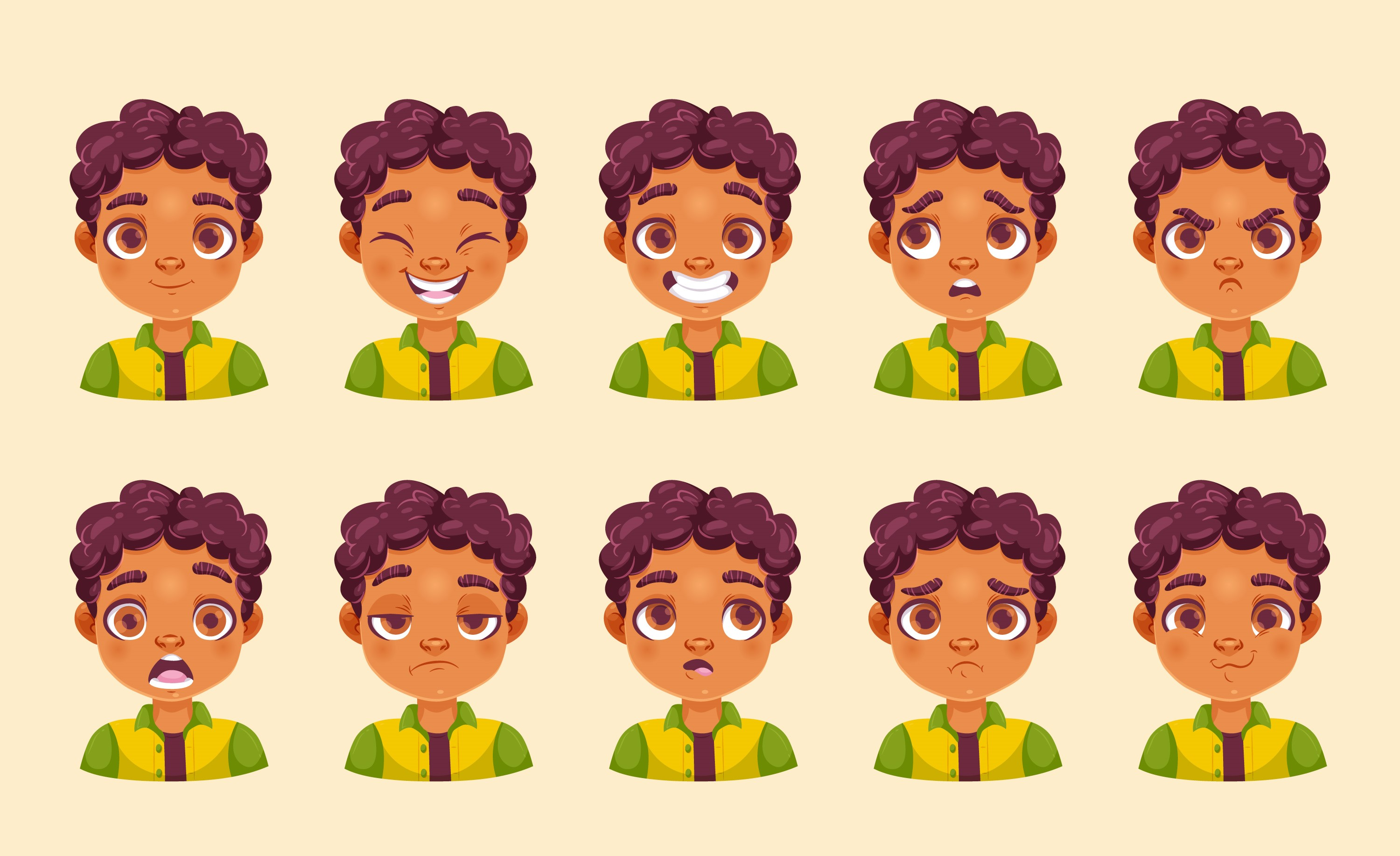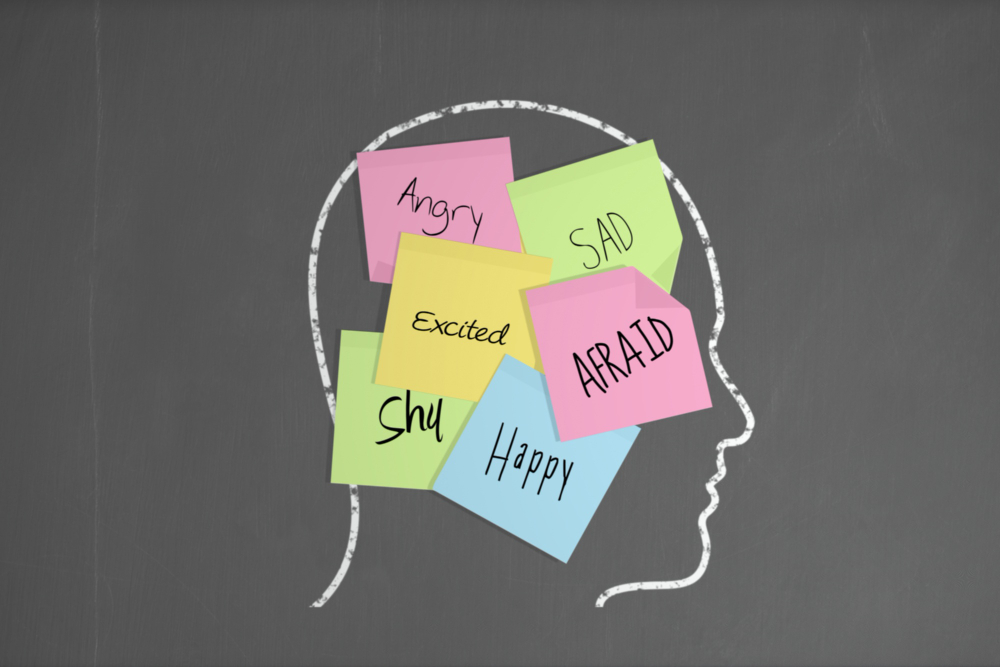List of human feelings and emotions


We all have many emotions and sensations as human beings. Emotions can be characterized as complex human experience that includes internal, subjective feelings, physical manifestations, and facial expressions. The words "feeling" and "emotion" are frequently used connectively, however, scientifically they are not the same thing.
There is a clear distinction between feelings and emotions even though they have many comparable components. Feelings are experienced consciously, whereas emotions might appear either consciously or subconsciously. This is a key factor that distinguishes the two. That is why some people may go their entire lives without ever fully comprehending the depths of their feelings.
Although it may be possible to learn about an emotion through its related thoughts, beliefs want, and behaviours, an emotion can only be felt through the emotional experiences it gives rise to. The unconscious mind is where emotions appear; they are not conscious. Extended psychotherapy can help bring emotions to the surface of the conscious state even though they are sometimes difficult to define. Although everyone can feel them to varying degrees of severity, they are nonetheless primordial reactions to either good or negative triggers.

Your feelings, on the other hand, are a representation of the various emotional experiences you have. The human system has evolved to produce specific emotional and physical reactions to various circumstances as part of survival processes. As a result of our emotional responses, feelings develop. Additionally, they may vary from person to person. Feelings are a result of both emotional and bodily events, such as hunger or discomfort. Although not all conscious experiences, such as seeing or believing, may be categorized as feelings, feelings are conscious experiences nonetheless.
Research has now identified a set of emotions that encompasses 27 distinct types of feelings which have greatly expanded on the original basic 6 emotions. Even if you're not aware of them all, you've probably experienced them all at some point. They consist of:
1. Anger
2. Fear
3. Sadness
4. Joy
5. Disgust
6. Surprise
7. Interest
8. Shame
Positive feelings are enjoyable or desirable conditions. Happiness is frequently the first positive emotion that comes to mind. Positive expressions, however, go much beyond that. They span the energy spectrum, from high-energy positive emotions like exhilaration to low-energy ones like tranquillity. It is up to us whether or not we find these emotional states enjoyable. Some of us like calmness while others favour the opposite, over excitement. Some have asserted that these preferences may have genetic roots. Following are an example of positive emotions.
Enjoyment
Happiness
Relief
Bliss
Calmness
Delight
Pride
Thrill
Acceptance
Friendliness
Trust
Kindness
Affection
Love
Devotion
Shock
Astonishment
Amazement
Astound
Wonder
A negative emotional state is unpleasant or unwelcome. But just because something is unpleasant doesn't mean it's useless. Negative feelings motivate us to take critical actions in our lives. For instance, anger empowers us to defend our needs, grief empowers us to draw back or seek out social support, and fear empowers us to flee from a tiger. Both happy and negative emotions are necessary for us. We simply need to learn effective methods for controlling our emotions if we are to maintain our well-being. Following are some words for negative emotion.
Fury
Outrage
Wrath
Irritability
Hostility
Resentment
Violence
Frustration
Grief
Sorrow
Gloom
Melancholy
Despair
Loneliness
Depression
Disappointment
Anxiety
Apprehension
Nervousness
Dread
Fright
Panic
Contempt
Disdain
Scorn
Aversion
Distaste
Revulsion
Guilt
Embarrassment
Chagrin
Remorse
Regret
Contrition
There are several categories under which human emotions can be placed. They may differ, according to various other theories and methods:
These are your body's initial, powerful, and obvious responses to what has transpired. They happen right after following a momentous occurrence and our innate impulses. Secondary emotions take over as primary emotions become more difficult to relate to an experience as time goes on.
Since they are truly responses to basic emotions, these are typically more difficult to comprehend. How we feel about basic emotions is influenced by secondary emotions. Let's imagine, for illustration, that you become irate with your friend for being late. This is the main feeling that the situation is associated with.
But what if they were to arrive late by one hour? The concern that anything might have occurred to them might have been stronger than the anger, which would still be present. Secondary emotions are more difficult to comprehend than primary emotions, but they are also simpler to manage because they are not a part of our primordial instinct. You can rewire your thinking to change your secondary emotions list.
According to certain beliefs, they can be divided into many groups depending on what's triggering them:
According to physiological theories, biological sensations give rise to our emotions. Our bodies react to external stimuli, which causes an emotional reaction.
These ideas aim to clarify how our emotions are mostly a result of our thoughts and how they are connected to them.
According to neurological theories, all emotions are the outcome of brain activity.
In a more "popular" approach, emotions are also referred to as theories of positive conduct. These are the various feelings that people enjoy experiencing and that lead to comfortable, enjoyable thoughts and experiences.
They relate to the feelings you tend to desire to flee from and avoid.

There are other ideas and collections of emotions too. Here, is the ultimate list of all emotions in alphabetical order.
A.
acceptance, admiration, adoration, affection, afraid, agitation, agony, aggressive, alarm, alarmed, alienation, amazement, ambivalence, amusement, anger, anguish, annoyance, anticipating, anxiety, apathy, apprehension, arrogant, assertive, astonished, attentiveness, attraction, aversion, and awe.
B.
baffled, bewildered, bitter, bitter sweetness, bliss, bored, brazen, and brooding.
C.
calm, carefree, careless, caring, charity, cheeky, cheerfulness, claustrophobic, coercive, comfortable, confident, confusion, contemptuous, content, courageous, cowardly, cruelty, curiosity, and cynicism.
D.
dazed, dejection, delighted, demoralized, depressed, desire, despair, determined, disappointment, disbelief, discombobulated, discomfort, discontentment, disgruntled, disgust, disheartened, dislike, dismay, disoriented, dispirited, displeasure, distraction, distress, disturbed, dominant, doubt, dread, driven, and dumbstruck.
E.
eagerness, ecstasy, elation, embarrassment, empathy, enchanted, enjoyment, enlightened, ennui, enthusiasm, envy, epiphany, euphoria, exasperated, excitement, and expectancy.
F.
fascination, fear, flaky, focused, fondness, friendliness, fright, frustration, and fury.
G.
glee, gloom, glumness, gratitude, greed, grief, grouchiness, grumpiness, and guilt.
H.
happiness, hate, hatred, helplessness, homesickness, hope, hopelessness, horrified, hospitable, humiliation, humility, hurt, and hysteria.
I.
idleness, impatient, indifference, indignant, infatuation, infuriated, insecurity, insightful, insulted, interest, intrigued, irritated, and isolation.
J.
jealousy, joviality, joy, and jubilation
K.
kind
L.
lazy, liking, loathing, lonely, longing, loopy, love, and lust.
M.
mad, melancholy, miserable, miserliness, mixed up, modesty, moody, mortified and mystified.
N.
nasty, nauseated, negative, neglected, nervous, nostalgic, and numb.
O.
obstinate, offended, optimistic, outraged, and overwhelmed.
P.
panicked, paranoid, passionate, patient, pensiveness, perplexed, persevering, pessimism, pitiful, pleased, pleasure, polite, positive, possessive, powerless, prideful, and puzzled.
R.
rage, rash, rattled, regret, rejected, relaxed, relieved, reluctant, remorse, resentment, resignation, restlessness, revulsion, and ruthlessness.
S.
sadness, satisfaction, scared, schadenfreude, scorn, self-caring, self-compassion, self-confident, self-conscious, self-critical, self-loathing, self-motivated, self-pity, self-respecting, self-understanding, sentimentality, serenity, shame, shameless, shocked, smug, sorrow, spite, stressed, strong, stubborn, stuck, submissive, suffering, sullenness, surprise, suspense, suspicious, and sympathy.
T.
tenderness, tension, terror, thankfulness, thrilled, tired, tolerant, torment, triumphant, troubled, and trust.
U.
uncertainty, undermined, uneasiness, unhappiness, unnerved, unsettled, unsure, and upset
V.
vengeful, vicious, vigilant, and vulnerable.
W.
weak, woe, worried, worthy, and wrath.
All words genuinely have an emotional tone, even though many different terms can be employed to describe our emotions. To determine how good or negative respondents regarded various words to be, one study evaluated the emotional tone of hundreds of words. The findings revealed, for instance, that terms like "massacre" were highly evaluated as negative, whereas words like "mother" were highly rated as positive. This study brought to light the fact that even phrases that did not depict any dangerous emotional sense in humans were said to be negative.
Many of us do not distinguish our emotions all that much. We can only define them with a few words, such as good, bad, happy, sad, nervous, or stressed. Look at the complete list of emotions to check which one you possess.
Others, on the other side, are better able to recognize or distinguish a greater variety of emotions. It should come as no surprise that those with strong emotional intelligence possess this skill. However, if you require assistance you should book an appointment with the specialist so that you can get a complete analysis using emotion-bridged therapy and continuous gradient patterns.
Our bodies and emotions are intertwined. Here are the organs and the feelings that go along with them:
Heart and small intestine: happiness, joy, excitement, hate, and impatience.
Spleen, stomach, and pancreas: trust, openness, anxiety, and worry.
Lungs, skin, and large intestine: courage, sadness, and depression.
Kidney and bladder: calmness, gentleness, and fear.
Liver and gallbladder: kindness, anger, and frustration.
According to research, persons who can distinguish their negative emotions more easily also tend to self-regulate them more frequently. The underlying operating system that runs on a personal level also influences your responses. The good news is that it is possible to make significant improvements to your real life and well-being by altering your fundamental system with tertiary emotions to evoke the feeling of love and affection. A crucial first step in this process might accurately define your feelings.

There are methods for enhancing emotional life and well-being. Recognize your feelings and the reasons behind them first. Identifying the sources of your life's stress, worry, and unhappiness might help you better manage your pleasant emotional state of well-being. Here are a few additional useful hints.
1. Express your feelings in appropriate ways.
Keeping other emotions within can make you feel uncomfortable as they are causing you physical discomfort due to stress, despair, or anxiety. It's acceptable to tell your loved ones when something is upsetting you. However, keep in mind that they might not always be able to support you in healthily handling your emotions. When this happens don't bottle it up, speak to someone. To assist you in enhancing your mental well-being, consider speaking with your family physician, a counsellor, or a religious leader.
2. Live a balanced life.
Pay attention to the aspects of your daily life for which you are grateful. Avoid getting fixated on the issues at work, school, or home that cause you to feel angry. This does not imply that you should fake happiness when you're pressured, anxious, or sad. While dealing with a bad emotion list it is necessary, to try to keep your attention on the good aspects of your life as well as practice self-awareness.
To record the things that bring you joy or tranquillity, you might want to keep a notebook. A cheerful mindset can enhance your quality of life and promote good health, according to some studies. Additionally, you might need to figure out how to let go of certain aspects of your life that are causing you stress and distress and make time to do the activities you like by focusing on new emotions that can make a difference.
3. Calm your mind and improve your body language.
Your emotions can be balanced by using relaxation techniques like yoga, Tai Chi, guided imagery, guided meditation, and listening to music. YouTube also offers free guided imagery films.
Guided thought is a type of meditation. It can come in a variety of shapes. For instance, you may accomplish it by moving about, stretching, or taking deep breaths. Consult your physician for suggestions on how to unwind.
4. Take care of yourself.
It's critical to take good care of your body by following a regular schedule if you want to maintain good emotional health. To release tension, establish a schedule of good meals, rest, and exercise. Don't overeat, and don't abuse alcohol or drugs. Substance abuse leads to additional problems, such as family and health troubles.
Your body's immune system might be compromised by poor emotional well-being. When going through an emotionally hard moment, you are more likely to get colds and other infections. It's possible that you might not feel happy while working out, eating, or taking the medication your doctor has prescribed.
You must speak with your doctor if you see signs of strong dislike, flight response or if bad sensations persist and become so intense that they prevent you from enjoying life. Doctors may diagnose you with "severe depression." Individualized therapy, medication, or a combination of the two can be used to treat depression, which is a common medical condition these days.
If you would like to learn more about your mental health, read our Mental Health Hub and find specific health tests that can measure biomarkers such as cortisol, vitamin D and iron levels.
Plus get the inside scoop on our latest content and updates in our monthly newsletter.